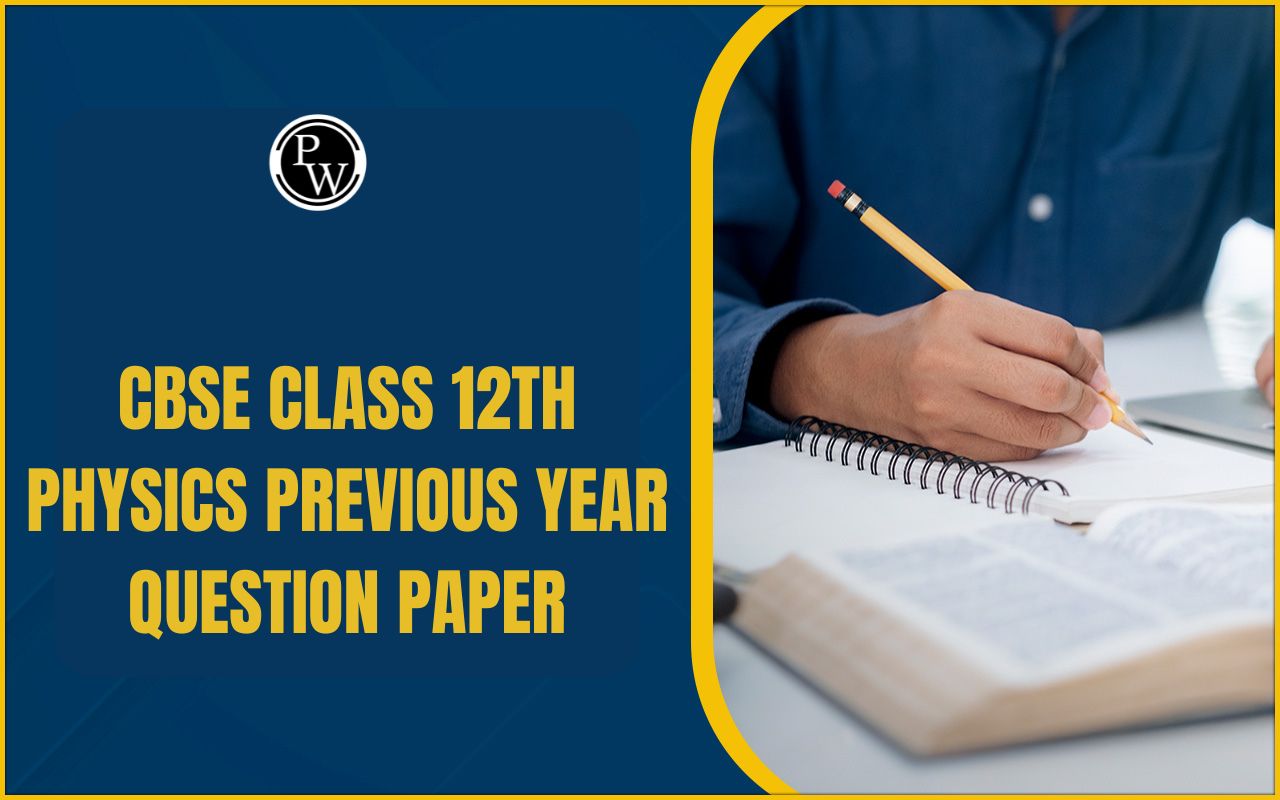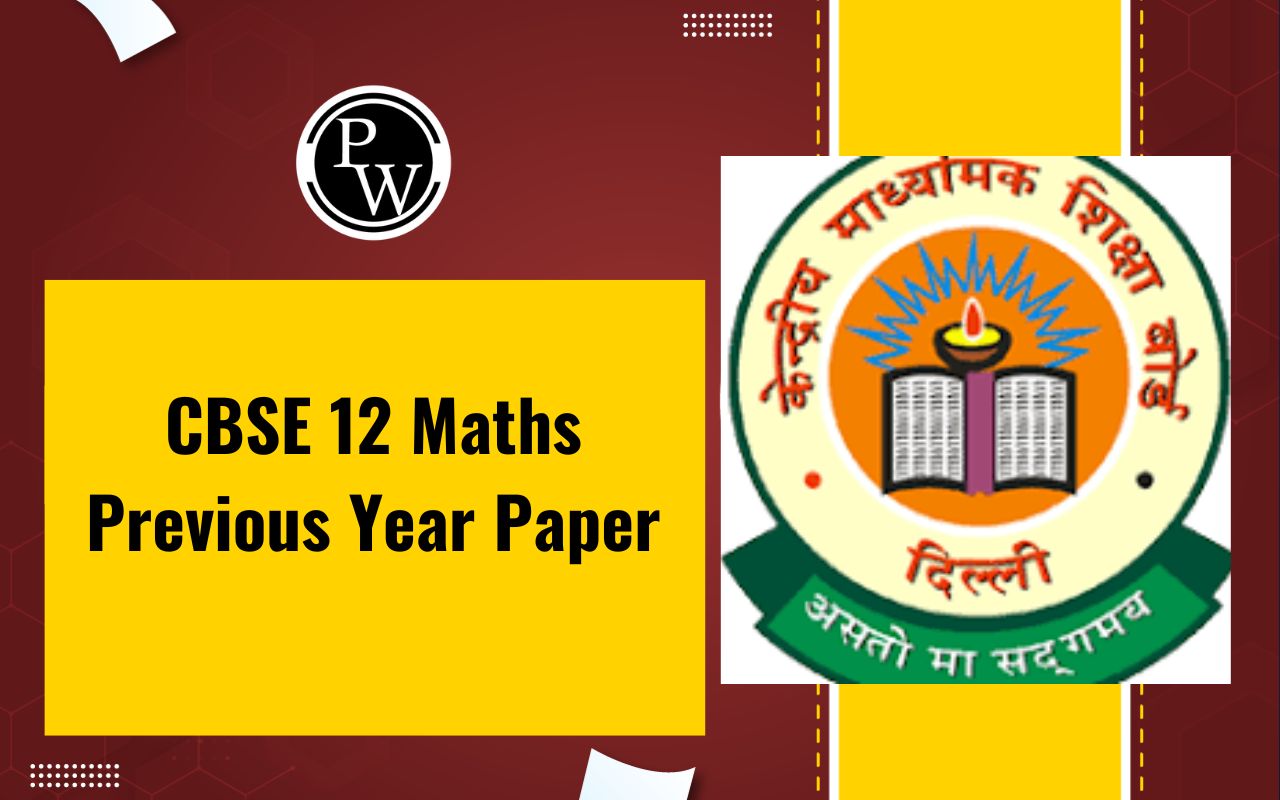
CBSE Class 12 Physics Notes Chapter 14 Overview
Semiconductor Devices and Communication Systems, Chapter 14 of CBSE Class 12 Physics, examines the basic ideas behind semiconductors and how they are used in contemporary electronics and communication. The first section discusses materials with conductivity qualities that fall between those of conductors and insulators, such as silicon and germanium. Introduction to important semiconductor devices: p-n junction diodes, Zener diodes, and transistors; their uses in switching, amplification, and rectification circuits are explained. In addition, CBSE Class 12 Physics Notes Chapter 14 discusses integrated circuits (ICs) and logic gates, which are crucial in digital electronics. The transmission and reception of signals are explained in the section on communication systems, with an emphasis on amplitude and frequency modulation as well as the necessity of modulation to prevent signal degradation. The discussion covers topics including satellite communication, optical fibre communication, and bandwidth requirements for effective transmission, emphasising the importance of these technologies for long-distance data transfer and modern telecommunication networks.CBSE Class 12 Physics Notes Chapter 14 PDF
Below we have provided CBSE Class 12 Physics Notes Chapter 14 Semiconductor Devices & Communication System pdf for the students, so that they can download it and access it offline.CBSE Class 12 Physics Notes Chapter 14 PDF
CBSE Class 12 Physics Notes Chapter 14 Semiconductor Devices & Communication System
Below we have provided CBSE Class 12 Physics Notes Chapter 14 Semiconductor Devices & Communication System - Solids have single energy levels where the atoms are arranged in a systematic space lattice. As a result, for an isolated single atom, the neighbouring atoms have a significant influence on the atom. Naturally, the proximity of atoms will cause the electrons of nearby atoms to mix, especially the valence electrons in the outermost shells that are not tightly confined by the nucleus. The number of acceptable energy levels will rise as a result of the intermixing, or there will be notable differences in the energy levels. As a result, in the case of a solid, there will be bands of energy levels rather than single energy levels associated with the single atom. Conduction Band, Valence Band & Forbidden Energy Gap: The term "valence band" refers to the band formed by a range of energy levels, including the valence electrons. The band that has the highest occupied band energy or one that is inhabited by valence electrons is known as the valence band. The least empty energy band is known as the conduction band. The distance between the valence band and the conduction band is known as the prohibited energy gap. An electron cannot inhabit the forbidden energy gap since there isn't a permissible energy state in that gap. Conductors, Semiconductors and Insulators: Materials that readily conduct charge carriers are known as conductors. Materials known as insulators prevent charge carriers from flowing freely. Additionally, materials with conductivity in between insulators and conductors are known as semiconductors. The insulators, semiconductors, and conductors can all be explained in terms of the prohibited band as follows.Insulators
In the case of insulators, the forbidden energy band will be extremely broad. This knowledge prevents electrons from jumping from the valence band to the conduction band. In insulators, the valence electrons will have an extremely strong link with their parent atoms. Certain electrons will be able to migrate to the conduction band when the temperature rises.Semiconductors
In semiconductors, the prohibited band will be quite narrow. You can use silicon and germanium as examples of semiconductors. Any material with electrical properties that fall between those of an insulator and a good conductor is considered a semiconductor. The electrons can move with ease from the valence band to the conduction band if only a small amount of energy is applied. For instance, an increase in temperature will cause the forbidden band to shrink and some electrons to be released into the conduction band.Conductors
In the case of conductors, there won't be any prohibited bands, and the valence and conduction bands will overlap. Here, there will be a large number of free electrons available for the conduction of electricity. The free electrons that cause the electric current will be caused by a tiny potential difference across the conductor. The important thing to remember about conductors is that without a restricted band, there wouldn't be a framework for creating holes. All that remains of the current in conductors is only an electron flow.Semiconductors
Therefore, a material exhibiting resistivity between conductors and insulators can be referred to as a semiconductor. The characteristics listed below will be present in semiconductors. (i) They'll be more resistive than conductors and less than insulators. (ii) A semiconductor's resistance will decrease when temperature rises and vice versa. (iii) A semiconductor's current conducting properties vary noticeably when an appropriate metallic impurity, such as arsenic, gallium, etc., is added. Impact of temperature of Semiconductors: Because there are no available free electrons and the covalent bonds are essentially strong, the semiconductor crystal will function as a suitable insulator. The thermal energy imparted to the crystal at normal temperature will cause some of the covalent bonds to break. Some of the electrons that were inhabited during the formation of these bonds will become free as a result of the bonds breaking. A little circle can be used to symbolise the covalent bond's electron's non-appearance. As a result, Hole can be understood as a gap or empty space that remains in the crystal structure. A hole will likewise have a unit positive charge since an electron has a unit negative charge. Mechanism of conduction of Electrons and Holes The electrons in the crystal lattice will move randomly if the covalent bonds are broken and they are liberated. These free electrons will exhibit a consistent drift in the opposite direction of the applied electric field if one has been applied. The electric current is another name for this. A hole is created when a covalent link is destroyed. When one electron breaks loose, one hole is created. Electron-hole pairs will be created by this thermal energy; there will be an equal number of holes and free electrons. These holes, like free electrons, can randomly pass across the crystal lattice. If an external electric field is provided, the holes will migrate in that direction. Semiconductor crystals will have a significant propensity to form covalent connections. Thus, an electron from the nearby atom will be drawn to a hole. A valence electron from a nearby covalent bond is now approaching to occupy the hole at position A. This will result in the creation of a hole at B. As a result, the hole will be successfully moved from A to B. This hole will travel in a straight line from B to C to D and so forth. The hole will move randomly in the non-appearance of an applied field. However, if an electric field is applied, the hole drifts along the applied field. Generation and Recombination of Carrier Pairs of electrons and holes will be created. The uncontrolled movement of free electrons and holes within the crystal lattice will be erratic. In such a random motion, there is always a chance that a free electron will come into contact with a hole. When a free electron comes into contact with a hole, they will recombine to form the covalent bond. Recombination will destroy both the free electron and the hole, resulting in the release of energy in the form of heat. In order to dissolve its covalent link, the energy thus created may be reabsorbed by another electron. A new electron-hole pair will be created in this way. Thus, simultaneous recombination of electrons and holes as well as the splitting of covalent bonds will occur. The rate at which electrons and holes are created will rise with temperature. The electron and hole densities will rise as a result of this increase. As a result, a semiconductor's conductivity will rise or its resistance will fall. This is the cause of the negative temperature coefficient of resistance found in semiconductors.Pure or Intrinsic Semiconductor and Impure or Extrinsic Semiconductors
A semiconductor that produces its electrons and holes only through thermal excitation is known as an intrinsic semiconductor. Alternatively, a pure semiconductor is referred to as an intrinsic semiconductor. In an intrinsic semiconductor, the number of free electrons is always equal to the number of holes. Extrinsic Semiconductors The inclusion of an impurity in the crystallisation process will increase the intrinsic semiconductor's electrical conductivity. One additional atom for every million atoms of the pure semiconductor will be the extra impurity, which is extremely tiny. Extrinsic or impurity semiconductors are terms used to describe this type of semiconductor. Doping is the process of introducing impurities into a semiconductor. Pentavalent atoms with five valence electrons, like bismuth, antimony, arsenic, and phosphorus, or trivalent atoms with three valence electrons, like gallium, indium, aluminium, and boron, will constitute the doping material. Since the pentavalent doping atom donates one electron to the conduction band of a pure semiconductor, it is also known as a donor atom. N–Type Extrinsic SemiconductorP–N Junction Diode
A P-N junction is formed when two P-type materials are tightly connected. Since the surface coatings and other defects create a significant discontinuity in the crystal structure, joining the two pieces will not result in the formation of a P-N junction. Therefore, by diffusing P-type material to one half side and N-type material to the other half side, a P-N junction will be formed from a piece of semiconductor, such as germanium. An assembly known as a P-N junction diode is needed if two P-type and N-type crystals are kept in contact to form a single component.Common Emitter Amplifier:
Amplifier Circuit by the Use of n–p-n Transistor

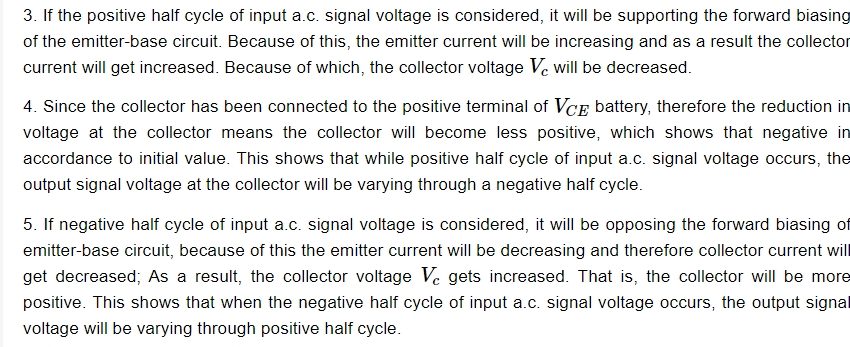
Common Base Amplifier
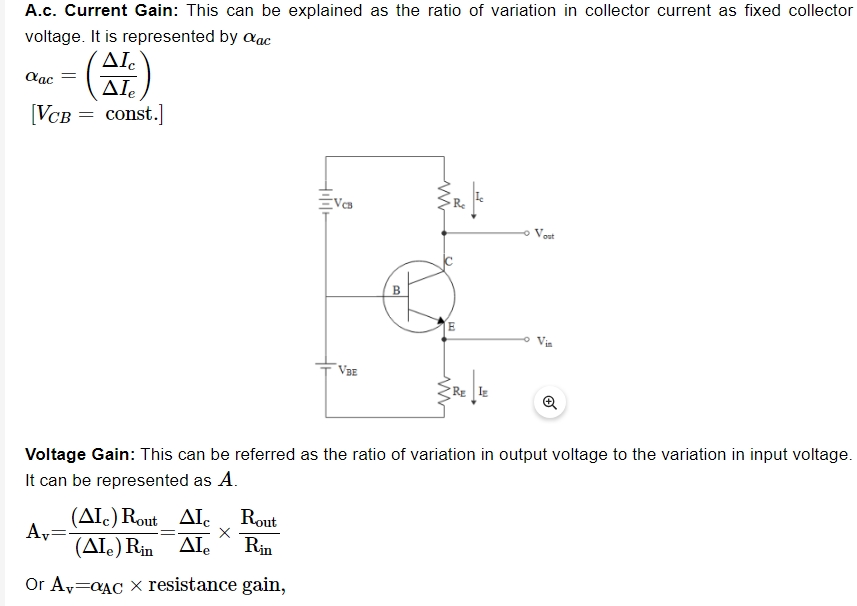
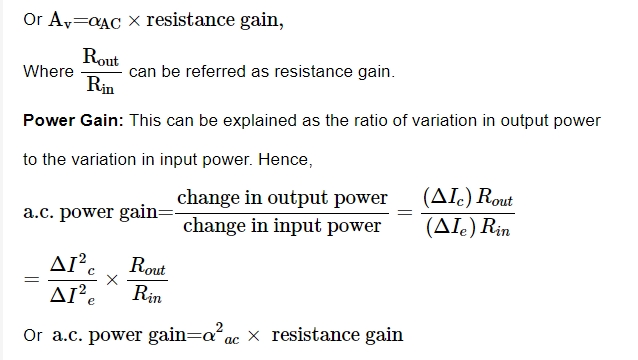
Common Emitter Amplifier
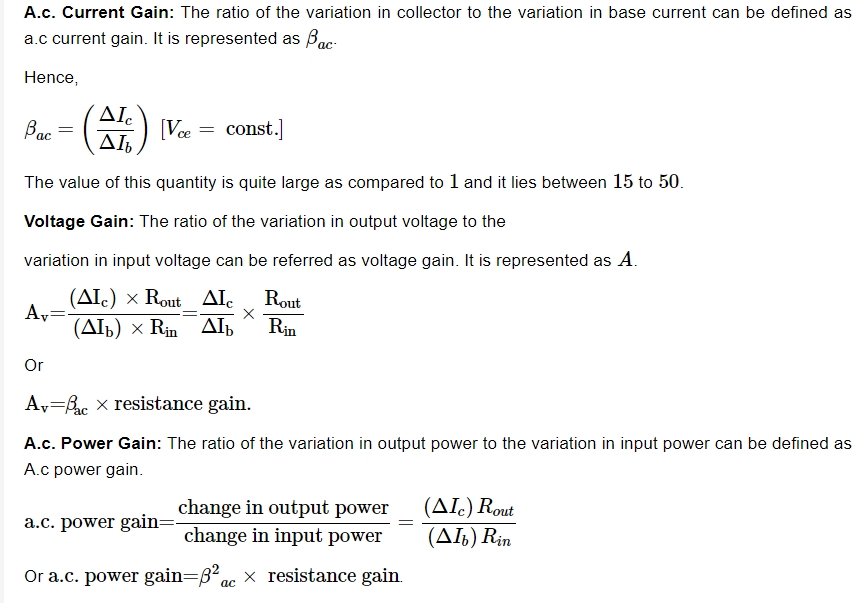
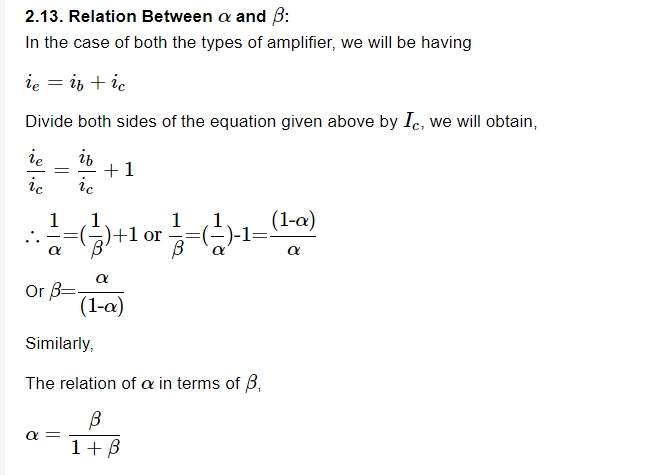
Universal Gate
A logic gate that may be utilised to carry out any Boolean function without the need for any other kind of logic gate is known as a universal gate. The NOR and NAND gates are two types of universal gates.Integrated Circuits
The traditional method of building circuits involves selecting parts such transistors, diodes, R, L, C, and so on, then soldering wires to connect them in the necessary ways. The Monolithic Integrated Circuit will be the most widely used technology. Logic gates are a component of these circuit types. The terms Small Scale Integration (SSI) (logic gates < 10), Medium Scale Integration (MSI < 100), Large Scale Integration (LSI < 1000), and Very Large Scale Integration (VLSI) (logic gates > 1000) can be used to describe the different types of integrated circuits (ICs) based on the level of integration, which is determined by the number of circuit components or logic gates.Benefits of CBSE Class 12 Physics Notes Chapter 14
For students getting ready for their board exams, the CBSE Class 12 Physics notes for Chapter 14, "Semiconductor Devices and Communication Systems," are quite helpful. This is how they can assist: 1. Concise and Focused Study Material CBSE Class 12 Physics Notes Chapter 14 summarize the vast syllabus into key points, making it easier to grasp the essential concepts. Important formulas, definitions, and diagrams are highlighted for quick revision. 2. Better Understanding of Semiconductor Devices Key semiconductor devices like diodes, transistors, and logic gates are explained in a simplified manner. Concepts such as forward and reverse bias, rectification, and amplification are clearly covered. 3. Simplified Communication Systems CBSE Class 12 Physics Notes Chapter 14 covers modulation, demodulation, and transmission of signals. Notes make these complex topics easier to understand by breaking them down into digestible parts. Diagrams like block diagrams for communication systems are explained step-by-step. 4. Time-Saving With summarized notes, students can quickly review topics instead of going through the entire textbook. This is helpful during last-minute revisions. 5. Structured Learning The notes are organized in a logical flow, helping students to follow the progression of concepts, from semiconductors to communication systems.CBSE Class 12 Physics Notes Chapter 14 FAQs
Is semiconductor class 12 difficult?
The toughest chapters in CBSE Class 12 Physics are Quantum Mechanics, Electromagnetic Induction - Faraday's Law, Nuclear Physics - Structure and Reactions, Semiconductors - Devices and Circuits, and Communication Systems - Signal Processing.
Is pn junction the key to all semiconductor devices?
p-n junction is the 'key' to all semiconductor devices. When such a junction is made, a 'depletion layer' is formed consisting of immobile ion-cores devoid of their electrons or holes. This is responsible for a junction potential barrier.
Is semiconductor a big chapter?
No, you can easily complete it.
What is the formula for semiconductor chapter?
Jn = q μn n E. Jp = q μp p E. where Jn and Jp are the drift current densities for electrons and holes, q is the elementary charge, μn and μp are the electron and hole mobilities, n and p are the electron and hole concentrations, and E is the electric field.
What is the symbol of pn junction?
A p-n junction diode is a basic semiconductor device that controls the flow of electric current in a circuit. It has a positive (p) side, and a negative (n) side created by adding impurities to each side of a silicon semiconductor. The symbol for a p-n junction diode is a triangle pointing to a line.
🔥 Trending Blogs
Talk to a counsellorHave doubts? Our support team will be happy to assist you!

Check out these Related Articles
Free Learning Resources
PW Books
Notes (Class 10-12)
PW Study Materials
Notes (Class 6-9)
Ncert Solutions
Govt Exams
Class 6th to 12th Online Courses
Govt Job Exams Courses
UPSC Coaching
Defence Exam Coaching
Gate Exam Coaching
Other Exams
Know about Physics Wallah
Physics Wallah is an Indian edtech platform that provides accessible & comprehensive learning experiences to students from Class 6th to postgraduate level. We also provide extensive NCERT solutions, sample paper, NEET, JEE Mains, BITSAT previous year papers & more such resources to students. Physics Wallah also caters to over 3.5 million registered students and over 78 lakh+ Youtube subscribers with 4.8 rating on its app.
We Stand Out because
We provide students with intensive courses with India’s qualified & experienced faculties & mentors. PW strives to make the learning experience comprehensive and accessible for students of all sections of society. We believe in empowering every single student who couldn't dream of a good career in engineering and medical field earlier.
Our Key Focus Areas
Physics Wallah's main focus is to make the learning experience as economical as possible for all students. With our affordable courses like Lakshya, Udaan and Arjuna and many others, we have been able to provide a platform for lakhs of aspirants. From providing Chemistry, Maths, Physics formula to giving e-books of eminent authors like RD Sharma, RS Aggarwal and Lakhmir Singh, PW focuses on every single student's need for preparation.
What Makes Us Different
Physics Wallah strives to develop a comprehensive pedagogical structure for students, where they get a state-of-the-art learning experience with study material and resources. Apart from catering students preparing for JEE Mains and NEET, PW also provides study material for each state board like Uttar Pradesh, Bihar, and others
Copyright © 2025 Physicswallah Limited All rights reserved.
Get App







